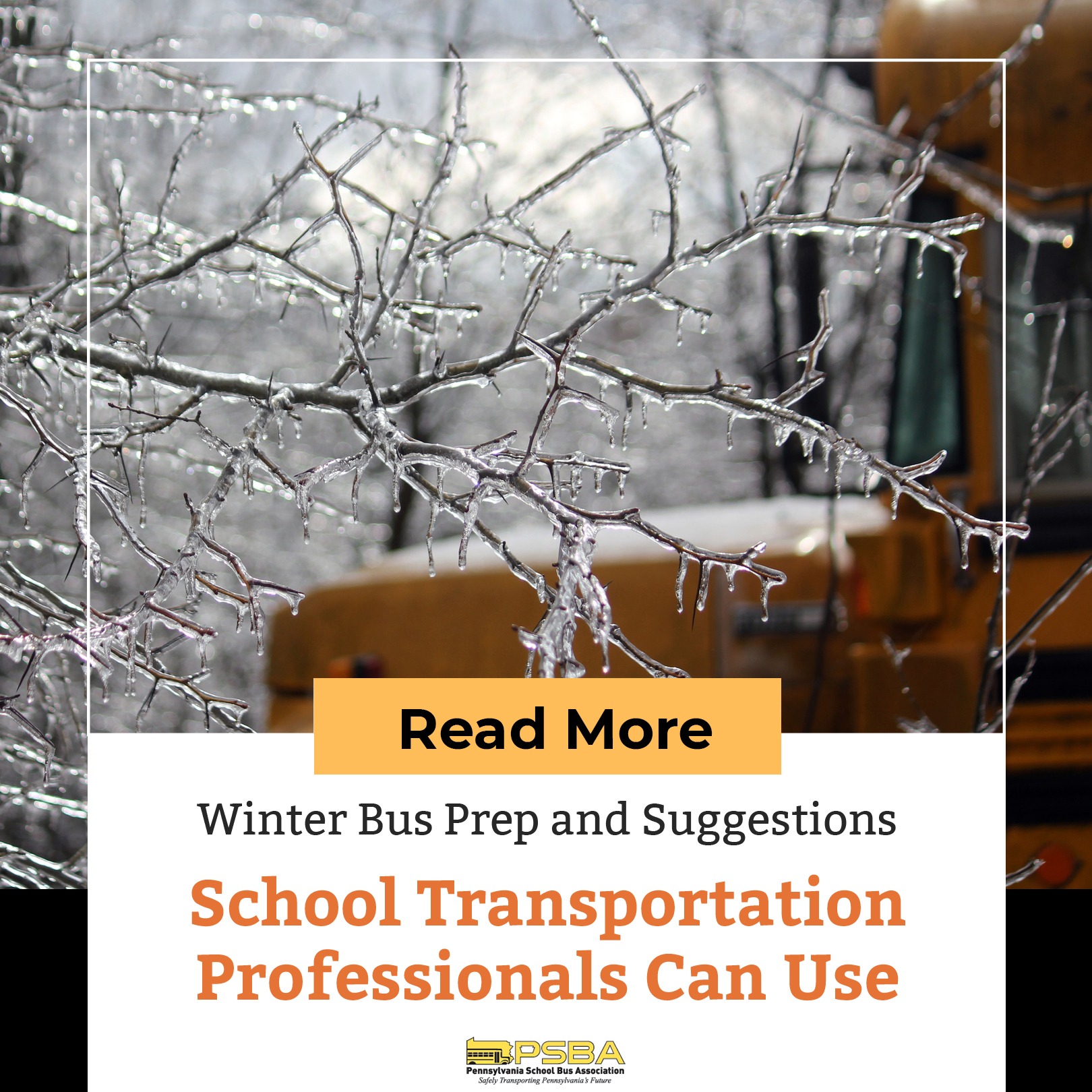As the colder months approach, preparing school buses for winter conditions is not just a recommendation—ensuring safety and reliability is necessary. Those who have experienced the unpredictability of winter weather understand the importance of being well-prepared. Here are some essential tips and strategies to help potential and new school transportation professionals stay ahead of this season’s challenges.
Essential Bus Maintenance for Winter
Heating Systems
Keeping all passengers warm is critical. Regular checks and maintenance of bus heaters ensure they operate efficiently when needed. This includes inspecting connections and vents for any blockages that could affect performance. If anything seems amiss, note it during the inspection so it can be fixed quickly.
Battery Care
Cold weather can be brutal on batteries. To prevent unexpected failures, it’s essential to check the battery’s charge and clean any corrosion from connections. Keeping the battery adequately charged ensures the bus starts reliably on cold mornings.
Tire Inspection
Winter tires are essential for safe driving, providing better traction on snow and ice. Regular checks should include monitoring air pressure and tread wear. Properly inflated, well-treaded tires make a significant difference in safety. Be sure to report any tires that won’t hold air or have defects.
Antifreeze Levels
Antifreeze prevents the engine from freezing in cold temperatures. Ensuring the correct antifreeze level and properly mixed can save a lot of trouble and potential damage to the bus engine.
Safety Equipment to Stock
Emergency Kits
A well-stocked winter emergency kit is vital. The kit should include blankets, flashlights, first-aid supplies, and extra winter clothing, ensuring preparedness for roadside emergencies. School districts and private transportation companies may require the use of specific emergency kits, so be sure to check with them if items are missing.
Ice Scrapers and Snow Brushes
Visibility is paramount for driving safely. Having ice scrapers and snow brushes accessible enables drivers to clear windows and mirrors effectively, maintaining optimal visibility.
Sand or Salt
A bag of sand or salt can be crucial if the bus gets stuck on ice. This can provide the necessary traction to get moving again without waiting for additional help. New school transportation professionals should receive training to ensure they know how to use sand or salt in these situations.
Driver Training and Resources
Winter Driving Training
Specialized training for navigating snowy and icy roads is crucial. This includes techniques for braking and turning, understanding how to manage skids, and knowing the particularities of winter road conditions. School districts and private transportation companies will train new drivers to drive under these conditions.
Resource Sharing
Creating a network where drivers can share tips and advice is invaluable. Experienced drivers can offer insights and practical knowledge that benefit everyone in the community, especially new drivers.
Emergency Procedures
It’s important to review and update emergency protocols for winter-related incidents each year before the season starts. Knowing how to respond quickly and efficiently can significantly improve the safety of all school bus passengers.
Daily Checklists for Drivers
Pre-Trip Inspections
Thorough pre-trip inspections are even more critical in winter than during warmer months. This includes checking that all mechanical systems are sound, from brakes to hydraulic systems, and ensuring the bus is fully operational before hitting the road.
Visibility Checks
Drivers must ensure that all lights, mirrors, and windows are clear of ice and snow. This helps the driver see and makes the bus visible to others on the road.
Communication Tools
Reliable communication devices are crucial, especially for receiving real-time updates on weather changes and road conditions. Ensuring these tools are operational can keep drivers informed and prepared. If you are having trouble with the device, report the issue to the transportation administrator to get a new one and fix the defective one.
Creating a Supportive Community
Feedback Mechanisms
Establishing a system for drivers to report issues and receive support quickly is essential for effective winter operations. This helps address any concerns before they become more significant problems. Each school district or private transportation company will have something in place for drivers to report traffic issues or poor road conditions.
Parent and School Communication
It is key to maintain open lines of communication with parents and schools about potential delays or issues due to weather conditions. Transparent communication helps manage expectations, reduces confusion, and provides peace of mind that the students are all right.
Acknowledging Efforts
The community and schools need to show appreciation for the hard work of the transportation staff, especially during challenging winter months. Simple gestures of gratitude can significantly boost the morale of new and experienced drivers.
Conclusion
By embracing these key strategies for winter preparedness, school bus drivers can significantly enhance the safety and comfort of their passengers. Proactive measures are about responding to winter challenges and anticipating them to maintain a smooth and safe transportation experience.
It would be beneficial if all transportation professionals reviewed these suggestions and integrated them into their winter preparedness plans. Additionally, if you have tips and experiences to share, it can help create a richer, more supportive community. Together, school transportation professionals can tackle the winter season with confidence and ensure that students always travel safely.
For anyone considering becoming a school transportation professional, read about the training needed for winter driving. You can learn about bus driver positions by visiting School Bus Hero to see what is available in your area.

